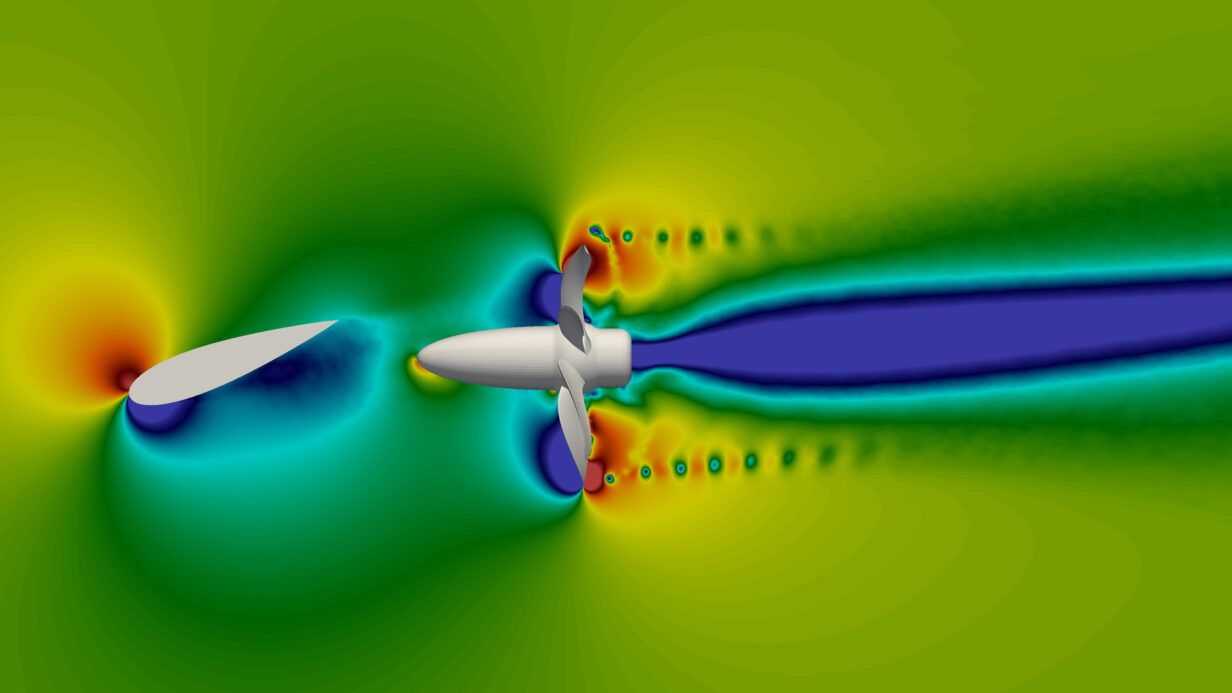
The paper “Influence of an upstream hydrofoil on the acoustic signature of a propeller”, co-authored by Drs. Posa, Felli, and Broglia from CNR-INM, was selected in the Editor’s picks by the editorial board of Physics of Fluids and published on the home page of the journal
The hydroacoustics of a rudder-propeller system, which is typical of the propulsion of underwater vehicles, was studied using the Ffowcs-Williams & Hawkings acoustic analogy, relying on data from Large-Eddy Simulations conducted on cylindrical grids consisting of almost 2 billion points. The study demonstrated a substantial increase of the sound pressure levels for growing incidence angles of the upstream rudder. This was especially the case when separation phenomena occurred on the suction side of the rudder, increasing the extent of its wake, ingested by the downstream propeller.
At small radial coordinates, within a few diameters from the propeller axis, the acoustic signature was dominated by the quadrupole component, due especially to the shear developing between the wakes shed by both rudder and propeller. The azimuthal transport of the shear layer from the rudder by the propeller wake was also source of a strong directivity of the sound, resulting in its complex dependence on both azimuthal and streamwise coordinates. However, moving radially away from the system the quadrupole component of sound experienced a dramatic decay and the acoustic signature was dominated by the loading noise coming from the propeller. The latter was also found a strong increasing function of the incidence of the upstream rudder, substantially reinforced in case of separation of its boundary layer. As a result of the faster radial decline of the quadrupole component, in comparison with the loading one, the azimuthal distribution of the sound pressure levels developed quickly axisymmetry moving towards outer radii.
More information can be found at:
https://doi.org/10.1063/5.0086633
https://doi.org/10.1016/j.compfluid.2019.104247
https://www.marinepropulsors.com/proceedings/2019/THB2-2.pdf

